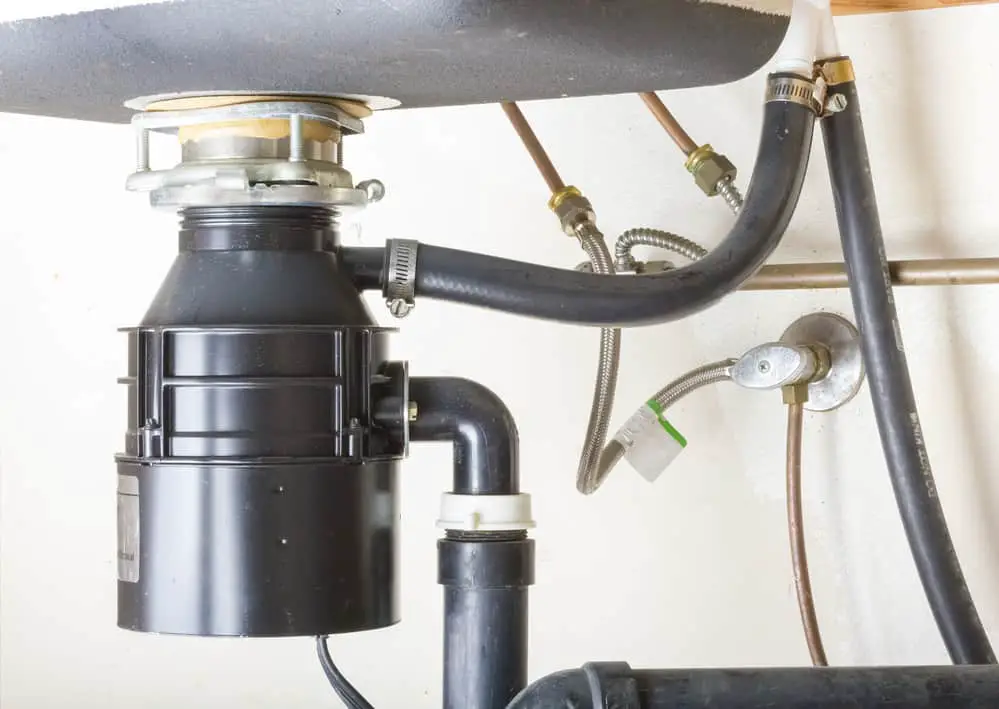All modern kitchens have both a dishwasher and a garbage disposal.
As such, you don’t need to labor cleaning your utensils or wondering how you will dispose of food leftovers.
So, in the kitchen, you will find the dishwasher and garbage disposal are kept within reach of each other.
(Since This Is The Case), Can A Dishwasher And Garbage Disposal Be On the Same Circuit?
Yes, however, you should consult a licensed professional electrician to advise you on building codes for your locality. The NEC recommends that all major appliances that consume a lot of power be connected to separate circuit breakers.
So, if you want to run your dishwasher and the garbage collector on the same circuit
- First, make sure that you are using a 20 amp circuit instead of a 15 amp circuit.
- Secondly, the total amperage of the two appliances should not exceed 80% of the circuit amperage rating.
For instance, you can have a 10amp dishwasher and a 5amp garbage disposal on a single 20 amp circuit.
Electric Circuit Requirements For Dishwashers
When installing a dishwasher, it is recommended that you connect to a dedicated circuit rated 15amp and 120/125 volt.
And you need to use a 14/2 NM wire to feed the 15 amp circuit.
But if you are using a 20 amp circuit, you should use a 12/2 NM wire.
It is also recommended that you allow enough slacking on the cables to make the dishwasher accessible during repair without disconnecting it from the main switch.
You can connect the dishwasher to a regular 110V power outlet.
The circuit has to have a 20amp capacity, in order for the garbage disposal and dishwasher to utilize it simultaneously.
In addition, the two appliances’ total amperage should not exceed 80% of the circuit amperage rating.
You should also check with your local code authorities if it is legal to have your dishwasher and the garbage disposal on the same circuit.
It’s recommended that the cords be grounded.
And depending on your local building code, you may be required to install Ground Fault Circuit Interrupter (GFCI) to protect the power outlet against shock.
In addition, you may also have to install Arc Fault Circuit Interrupter (AFCI) protection to guard against fires.
Electric Circuit Requirements for Garbage Disposals
Garbage disposal does a lot of work grinding up garbage and food refuse. Therefore it needs a bit of amperage to handle the load.
To install a garbage disposal, you need a dedicated 15 amp circuit fed by a 14/2 NM wire.
So, if you are connecting a dishwasher and garbage disposal on the same circuit, you should use a 20 amp circuit and 12/2 NM cord.
Additionally, depending on your area building code, you may be required to install GFCI and AFCI protection on the circuit.
However, the GFCI breaker tends to trip because of motor start-up surges.
So, when it trips, it quickly disconnects the current flow through the unintended ground path.
You will find that most electricians do not install GFCI on the circuit if it is not a local code requirement. But you will need AFCI protection to guard against fires.
Should You Run Both Appliances Simultaneously?
If you are very good at multitasking, you may have felt the need to do the dishwashing while grinding the food refuse, and you are wondering if it is safe to operate the two appliances simultaneously.
Yes, you can run the two appliances simultaneously, but there are a few things you need to get right first.
You should ensure that the plumbing system is working correctly and can support the dishwasher and the garbage disposal operating simultaneously.
Since the both appliances share the same drainage pipes, the garbage disposal will need to be totally clear before using the dishwasher.
So, if the plumbing system is not working correctly, there’ll be a backlog of food materials and debris from the garbage disposal to the dishwasher.
It is very unsightly and unhygienic to have a pool of dirty water flooding the dishwasher.
Can you imagine the mess it will cause to your utensils?
Actually, the dishwasher is made to drain through the garbage disposal unit.
Therefore, if there is a problem with the linkage between the two appliances, the food waste from the garbage disposal unit may start flowing to the dishwasher, contaminating the utensils.
Secondly, you should determine the amount of power that the two appliances will draw from the circuit when you run them together.
An overloaded circuit is unstable and can be a safety hazard.
Now before you run the dishwasher and garbage disposal together, it is suggested that you run the dishwasher for some minutes before turning on the dishwasher.
This will help you check any debris blocking the water drainage from the dishwasher.
And so, if it is running smoothly, you can go ahead and switch on the two appliances.
Wrapping Up
Both kitchen appliances can be on the same circuit.
However, it is recommended that instead of upgrading your 15amp to 20amp, you should connect a dedicated 15amp circuit for both the dishwasher and the garbage disposal.
In addition, you should be open to consulting your local professional electrician for guidance on code requirements.

